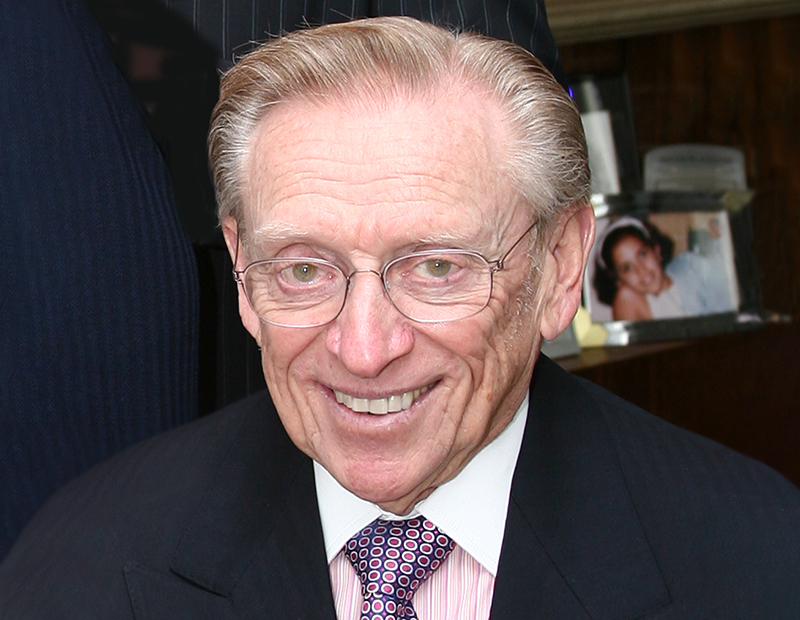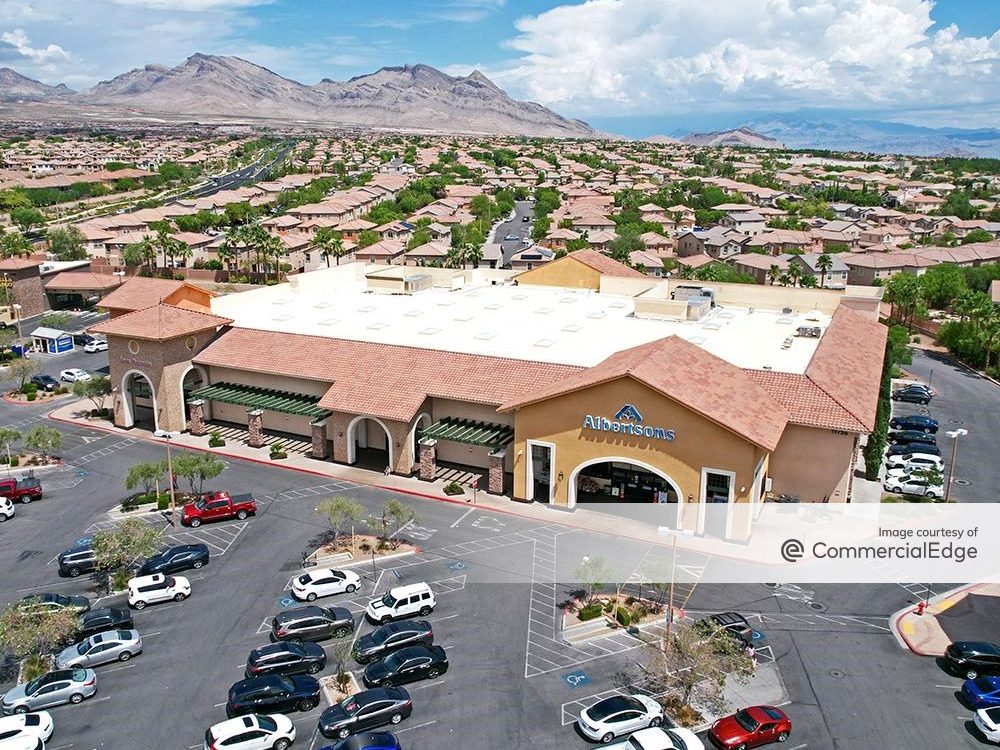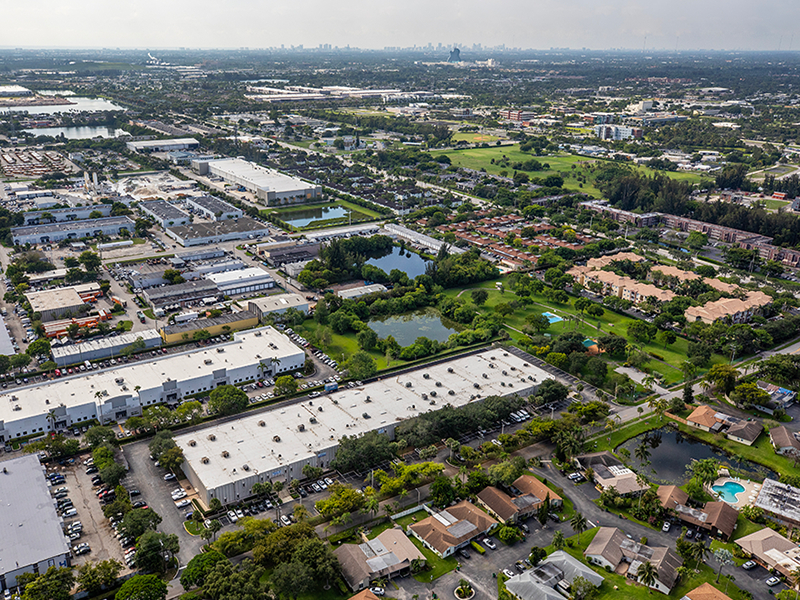CPE’s 2018 Lifetime Achievement
CPE's Lifetime Achievement award winner is chosen by a confidential vote of their peers among our volunteer advisory board of industry leaders.
Larry Silverstein
Owner, Silverstein Properties
Larry Silverstein was born May 30, 1931, 29 days after President Herbert Hoover pressed a button at the White House and lit all 102 stories of the Empire State Building in New York City. Eighteen months after the stock market crashed, with millions hungry and out of work, the opening of the tallest building in the world was a cause for national pride and celebration.
Silverstein’s family lived, as he tells it, on the “seventh floor of a six-story walkup” in Brooklyn. Silverstein, 87, vividly recalls dragging blocks of ice for the icebox up all six stories. “Making it through those times was pretty tough, and it taught you the facts of a dollar and the importance of not squandering but saving once you made something,” Silverstein said. “It was a time of great learning. There was so little available, and so much to do, and so little with which to do it all.”
Despite hardships and lack of opportunity or capital, Harry G. Silverstein taught his son three lessons that would prove priceless for his future: “Treat everybody with absolute respect. Treat your elders with great sensitivity because they were your elders. They’ve lived longer. They’ve been around more. And become a good listener and hear what people have to say.”
Harry Silverstein was earning a precarious living by leasing Lower Manhattan loft space to rag-and-remnant traders in the garment business. “The commissions were few and far between. Very often, he had to share them with other brokers,” Silverstein recalled. “Life was very difficult, and it became obvious to me that, as brokers, we could not really make a decent living.”
By that time, 1956, Silverstein had married, and he and his wife, Klara, wanted to start a family. The couple relied on Klara’s teaching salary to pay the bills while he earned an undergraduate degree from New York University and, later, attended Brooklyn Law School. “I realized we had to change what we were doing as brokers and do something that was more advantageous, where you could make a better living—and that was to become an owner,” Silverstein told his father.
Harry Silverstein challenged that idea, saying: “We have no capital. We have no money. We have no resources. How are we supposed to become an owner?”
“At that time,” Larry Silverstein said, “there were two people in New York who had just acquired the Empire State Building: a gentleman by the name of Lawrence Wien and another by the name of Harry Helmsley. And they acquired the Empire State Building by going out and offering 5,000 investors an opportunity to become a limited partner in the ownership of the Empire State Building. They put it together with small amounts of capital—I think $5,000 each (share) with which they would acquire the building. It was the most amazing thing. I looked at that, and I said to myself and to my father: ‘If they can do that with their capital, why can’t we?’”
Silverstein says his father looked at him and asked, “You can figure it out?” I replied, “I sure as hell will try.”
In 1957, with his father and brother-in-law, Bernard Mendik (who would later strike out on his own), Silverstein established Harry G. Silverstein & Sons (later Silverstein Properties). The firm bought its first property, a Manhattan industrial loft building on E. 23rd St., with, as Larry Silverstein envisioned, a small group of 20 investors, each contributing $10,000 to the deal. “With that we bought our first piece of real estate, without knowing much of what to do or how to do it—it was really trial and error,” Silverstein said. “We somehow managed, incredulously, to succeed.”
The fledging investors achieved higher rents than anticipated, allowing them to refinance the building and return the money to their investors while still retaining ownership. The first piece of real estate led to a second, then a third and a fourth. “Finally, the banks, which would never lend us anything because we had no assets against which to lend—we had no collateral—agreed to give us whatever we needed in order to buy larger buildings,” the mogul recalled.
With financial backing, the company was able to acquire and renovate larger buildings, and ultimately, to construct them. “So it was a sea-change in our lives as a result,” Silverstein said. “The rest is history.”
By 1978, the company’s portfolio encompassed 4 million square feet of commercial space, including 521, 530, 689 and 711 Fifth Ave.; 44 Wall St.; and a shopping center in Stamford, Conn.
Two years later, Silverstein Properties was in the position to bid on the construction of the 47-story 7 World Trade Center, which was completed in 1986. The company leased the entire building to one tenant, Drexel Burnham Lambert, for $3 billion over a term of 30 years.
“And then, of course, 9/11 happened,” Silverstein said. “The building was the last one to come down on 9/11, and in terms of rebuilding the Trade Center, the first to go back up after 9/11. We finished it in ’06.”
The new 52-story, 1.7 million-square-foot 7 World Trade Center is almost fully leased to tenants that include Moody’s, the New York Academy of Sciences, MSCI and WilmerHale. 7 World Trade became the precursor to Tower 4, Tower 3, Tower 1, the Oculus, Liberty Park and the National September 11 Memorial Museum. The 80-story 3 World Trade Center opened in June 2018. Two buildings, slated for completion in 2022, remain unfinished at the site: the $400 million, 1,200-seat Ronald O. Perelman Performing Arts Center and the $4 billion-plus 2 World Trade Center.
Silverstein, whose office on the 38th floor of 7 World Trade Center overlooks his empire below, demurs that, once the entire Trade Center is finished, he’ll have to find something else to do with his time.
For now, he’s plenty busy. Shortly after 3 World Trade Center opened, Silverstein announced a new business segment to provide commercial real estate financing, particularly construction loans. The new endeavor, Silverstein Capital Partners, is headed by industry veteran Michael May, founder & COO of Cantor Commercial Real Estate, where he led the origination of more than $50 billion in commercial real estate loans.
Clearly, Larry Silverstein’s real estate story is not over yet. Even so, it is unlikely that anything to come could remotely match the intensity and public scrutiny of the 22-year rebuilding of the World Trade Center. As a result, it is this “unanticipated” sliver of a life brilliantly lived that Silverstein is in the process of capturing in a new book that will stand as a guide for future public-private ventures. The book’s release is set to coincide with the opening of Tower 2 in the World Trade Center complex.
“I found myself in the middle of 10,000 issues and complexities, the emotions of which could tax anybody, We had it all, and it became a real fascination. I figured that was enough to talk about.”








You must be logged in to post a comment.